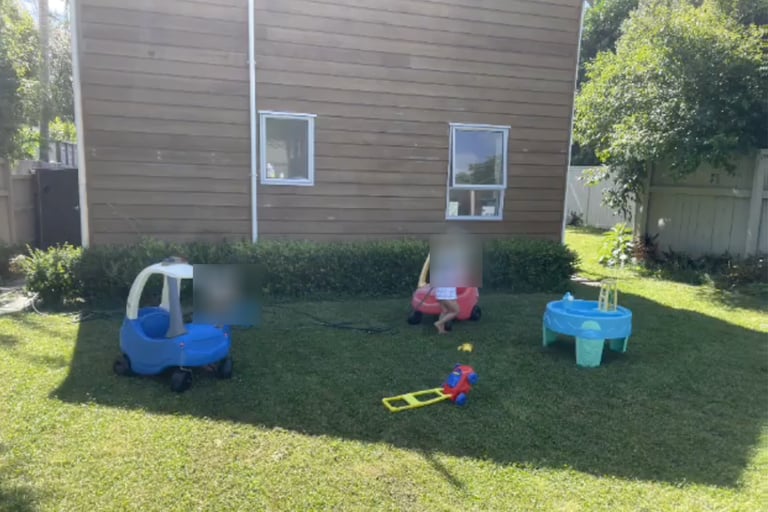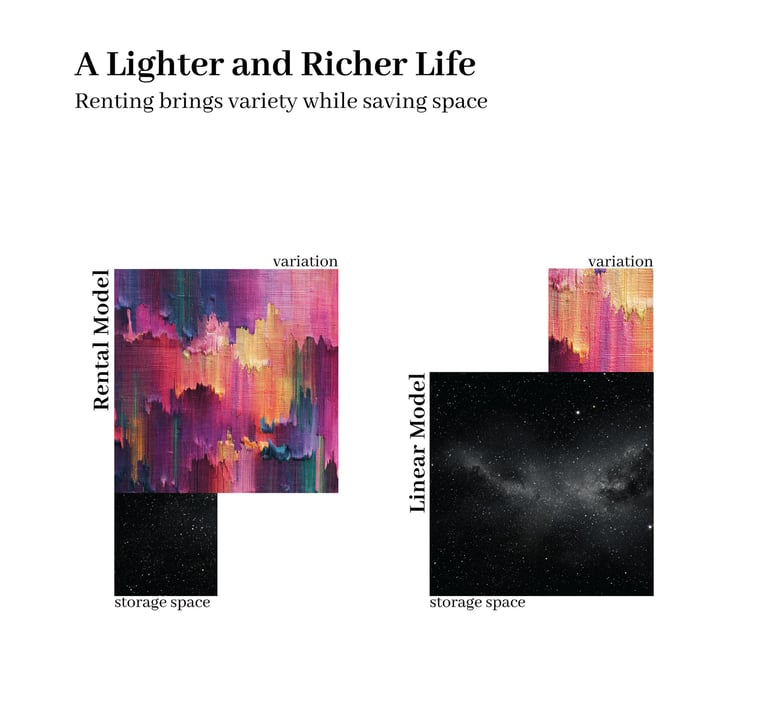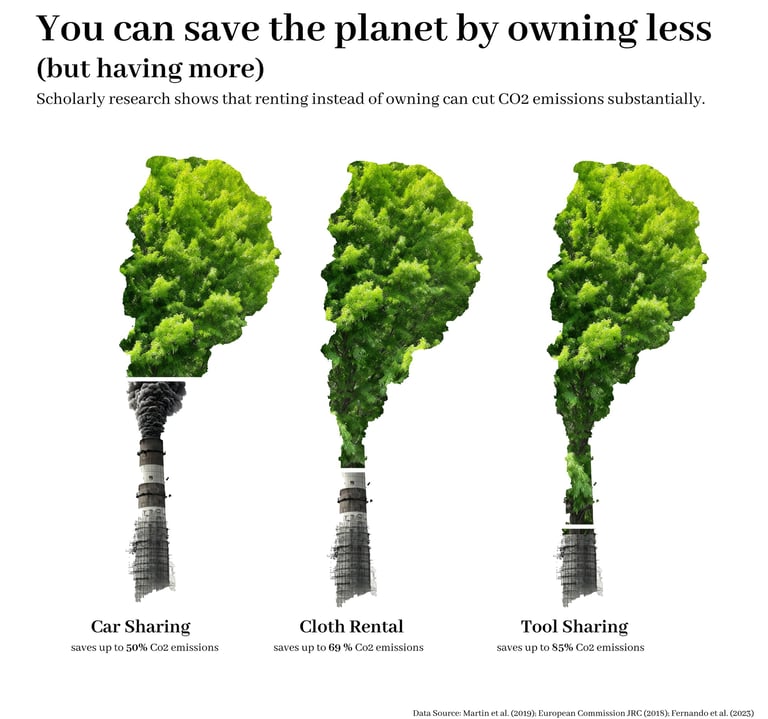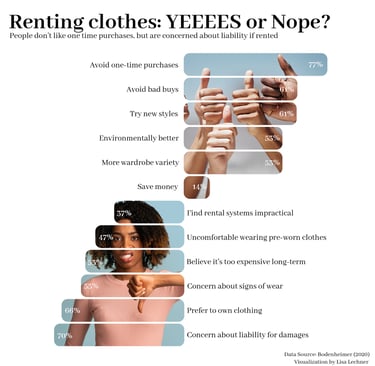How Renting Can Help You Save the Planet (While Living Better)
What happens when you swap ownership for access—and glamour for sustainability? In this blog, I explore my first conscious experience renting a designer dress, the surprising ease of toy libraries in New Zealand, and the hard data behind shared consumption models. Backed by insights from the Wear2Share project and cutting-edge LCA research, I unpack why renting can cut emissions, delight customers, and reshape business. From clothing to tools to mobility, the future is lighter—and closer than you think. Whether you're a consumer curious to try or a business ready to rethink, this is your invitation to join the shift.
Lisa Lechner
7/23/20255 min read
In 2023, I made my first really conscious experience of renting.
It was for a family celebration, and I wore a beautiful Stella McCartney dress I had rented for just 24 euros. I felt amazing in it—confident, light, proud. Not just because of how it looked, but because I knew I wasn’t buying something I’d only wear once. I didn’t add anything to my wardrobe, I didn’t waste money or resources—and still, I got to feel great


A few months later, my family and I moved to New Zealand for nine months with our two little kids. We packed light. No toys, no extras. And that turned out to be totally fine—because we found toy libraries. Every week, we rented new toys: a giant space station for our four-year-old, a farm full of animals for the toddler. The toys matched whatever they were curious about in that moment. It was simple, fun, and incredibly affordable.


Those two moments made it clear for me:
Renting gives you freedom (who does not like freeeeedom?). You get what you need when you need it, without the weight of ownership. And it’s so much better for the planet.
More variety, less stuff
What struck me most about renting—whether it was the dress or the toy spaceship—was how much variety it brought into our lives without the baggage of ownership.
Renting gives you access to what you need or want in the moment, without needing to store it, maintain it, or feel guilty about buying it. That dress made me feel amazing for a special day—and then I sent it back. The toys matched our kids’ interests that week—and then they moved on. We didn’t have to commit to things forever. We just lived fully and lightly.
It’s the opposite of what we’re used to: cramming wardrobes, toy shelves, and basements with stuff “just in case.” Renting flips that mindset. It gives you room. Not just in your closet, but in your life.


I Got Nerdy About It (Of Course)
Of course, I couldn’t stop at the lived experience. That’s just me. I went deep. I took a solid waste management course at the IHS Delft Institute for Water Education and a life cycle assessment training at MIT—and yes, I loved it. Because if something feels right, I want to know why it’s right.
So I dug into the science behind it. I read studies. I analyzed emissions. I wanted to understand what makes renting truly sustainable—and where the catch might be.
Life Cycle Assessment (LCA) is a way to measure the full environmental impact of a product or service—from the extraction of raw materials to manufacturing, use, and disposal. It helps answer a key question: Is renting actually better for the planet?
And the answer is: yes, it can be—but only under the right conditions.
Here’s what makes the difference:
Transport matters. A lot. If rented items are shipped long distances every time, the emissions from transport can cancel out the benefits. Local, efficient logistics are key.
The quality and durability of the product. A rented item needs to last—and be used by many people. If a dress is only rented twice before being discarded, it’s worse than owning. If it’s rented 30 times and loved each time, it’s a sustainability win.
Cleaning and maintenance. Especially for things like clothing, energy and water use in cleaning can add up. But optimized systems (like bulk washing, eco detergents, and smart scheduling) keep the footprint low.
Utilization rate. The more an item gets used between its production and disposal, the better. That’s why sharing or renting high-use, high-impact items is such a big opportunity.
These are the factors that shape the environmental outcome. And researchers have studied them in detail.
The numbers are clear—and they’re not linear. When we switch from owning to sharing, the environmental benefits don’t just trickle in—they compound. Studies show that one shared car can replace up to ten privately owned ones. A single rented garment, if circulated widely and maintained well, can replace dozens of fast-fashion purchases. And tools? Their potential is almost absurd—why should every household own a power drill that gets used for a total of 13 minutes in its lifetime?
What’s powerful about this shift is not just the reduced waste—it’s the systemic redesign it points to. In a non-linear, circular model, products aren’t born and buried. They loop. They live multiple lives. And with each reuse, the environmental cost per use drops dramatically. As the EU’s Joint Research Centre puts it: under the right conditions, collaborative models can lead to exponential emission reductions—not small savings, but deep structural change.


The logic is elegant. The science is strong. But here’s the real question:
Have you ever rented something instead of buying it? What reasons held you back?
Whereas the car and tool sharing market is bigger, renting clothes is a new phenomena. Miriam Bodenheimer in the context of her research project Wear2Share conducted a survey asking for the pros and cons on renting textiles.
Her findings echo the broader picture: people love the idea of variety, sustainability, and avoiding waste—but they hesitate when it comes to trust, cleanliness, and giving up ownership. That tension is where the next leap lies—not just in making renting possible, but in making it irresistible. The future of fashion, toys, tools, and mobility could be lighter, smarter, and more shared—but only if the systems feel seamless and the experience feels good.


If you're a business owner, ask yourself:
What would make my customers come back again and again—not to own more, but to rent smarter?
Designing for access over ownership doesn’t just cut emissions—it builds loyalty, increases touchpoints, and keeps your products in use longer. It’s good for the planet and your business.
And if you're a consumer, give it a try. What’s the next product you fancy? A dress? A drill? A bike trailer for the weekend?
Maybe you want to find a rental option—and experience the joy of lightweight variety.
Bibliography:
Bodenheimer, M., et al. (2022).
Wear2Share: Innovative Kreislaufgeschäftsmodelle ind er Textilwirtschaft - Abschlussbericht.
Fraunhofer ISI.
European Commission, Joint Research Centre (JRC). (2021).
Environmental Potential of the Collaborative Economy (KH-02-18-319-EN-N).'
Luxembourg: Publications Office of the European Union.
Fernando, S., Buttriss, G., Yoon H-J., Soo V., Compston P., Doolan M. (2023).
Integration of Consumer Preferences into Dynamic Life Cycle Assessment for the Sharing Economy: Methodology and Case Study for Shared Mobility.
Life Cycle Management, 28, 429-461.
Martin, M., Lazarevic, D., & Gullström, C. (2019).
Assessing the Environmental Potential of Collaborative Consumption: Peer-to-Peer Product Sharing in Hammarby Sjöstad, Sweden. Sustainability, 11.
Yin, W., Kirkulak-Uludag, B., & Chen, Z. (2021).
Is the Sharing Economy Green? Evidence from Cross-Country Data. Sustainability, 13.
